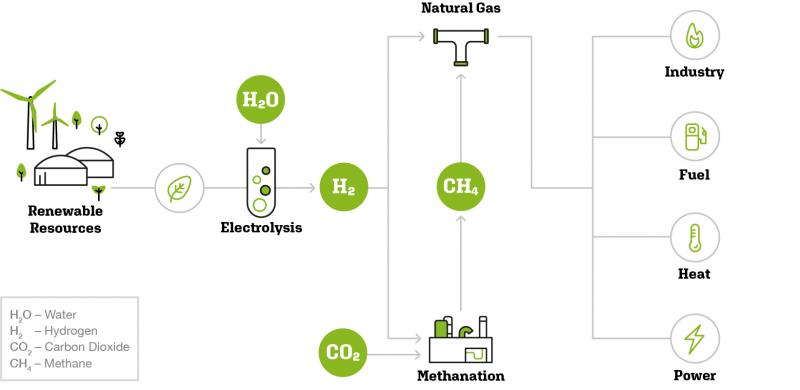Power-to-Gas (PtG) is a groundbreaking technology that is transforming the way we produce, store, and utilize energy. As the world continues to grapple with the challenges posed by climate change and the depletion of traditional fossil fuel reserves, PtG offers a promising solution to bridge the gap between renewable energy generation and reliable storage. This article explores the key principles, benefits, and applications of Power-to-Gas, shedding light on its potential to revolutionize the global energy landscape.
Understanding Power-to-Gas
Power-to-Gas is a cutting-edge energy storage method that involves converting surplus electricity generated from renewable sources, such as solar and wind, into synthetic natural gas or hydrogen. The process typically consists of two main steps: electrolysis and methanation.
Electrolysis: During this phase, electricity is used to split water molecules into hydrogen and oxygen. The hydrogen can be directly utilized as a clean fuel, or it can proceed to the next step for further conversion.
Methanation: In this step, the generated hydrogen is combined with carbon dioxide (CO2), usually sourced from industrial processes or captured from the atmosphere, to produce synthetic natural gas (methane) through a catalytic reaction. This synthetic methane can be easily integrated into existing natural gas infrastructure, making it a highly versatile and practical storage solution.
Benefits of Power-to-Gas
-
Grid Balancing: One of the most significant advantages of PtG is its ability to balance the fluctuating supply of renewable energy. As solar and wind power production heavily depend on weather conditions, surplus energy can be stored as synthetic gas, ensuring a stable and continuous supply during low-generation periods.
-
Seasonal Storage: Unlike traditional battery storage, which is more suitable for short-term storage, Power-to-Gas enables long-term seasonal storage. This is crucial in regions with pronounced seasonal variations in renewable energy production.
-
Decarbonization: PtG plays a pivotal role in decarbonizing the energy sector by converting excess CO2 into synthetic methane. This process not only facilitates carbon recycling but also reduces greenhouse gas emissions.
-
Energy Transportation: Synthetic methane produced through PtG can be easily transported through existing natural gas pipelines, making it an efficient method to distribute renewable energy to distant locations without extensive infrastructure investments.
Applications of Power-to-Gas
-
Grid Support: PtG enhances the stability and reliability of electrical grids by providing grid operators with a valuable tool to manage the integration of intermittent renewable energy sources.
-
Energy Storage: PtG addresses the energy storage challenge, enabling excess renewable energy to be stored efficiently and released when demand peaks.
-
Sector Integration: PtG fosters sector coupling by linking different energy sectors. For instance, surplus renewable electricity can be used in transportation through hydrogen fuel cell vehicles or injected into the natural gas grid for heating and industrial processes.
Conclusion
Power-to-Gas is a groundbreaking technology that holds immense promise in shaping a sustainable and resilient energy future. By converting surplus renewable electricity into synthetic natural gas or hydrogen, PtG addresses the critical challenge of energy storage and grid balancing. As this technology continues to evolve and gain traction worldwide, it has the potential to revolutionize the global energy landscape and pave the way for a greener, cleaner, and more sustainable future.
